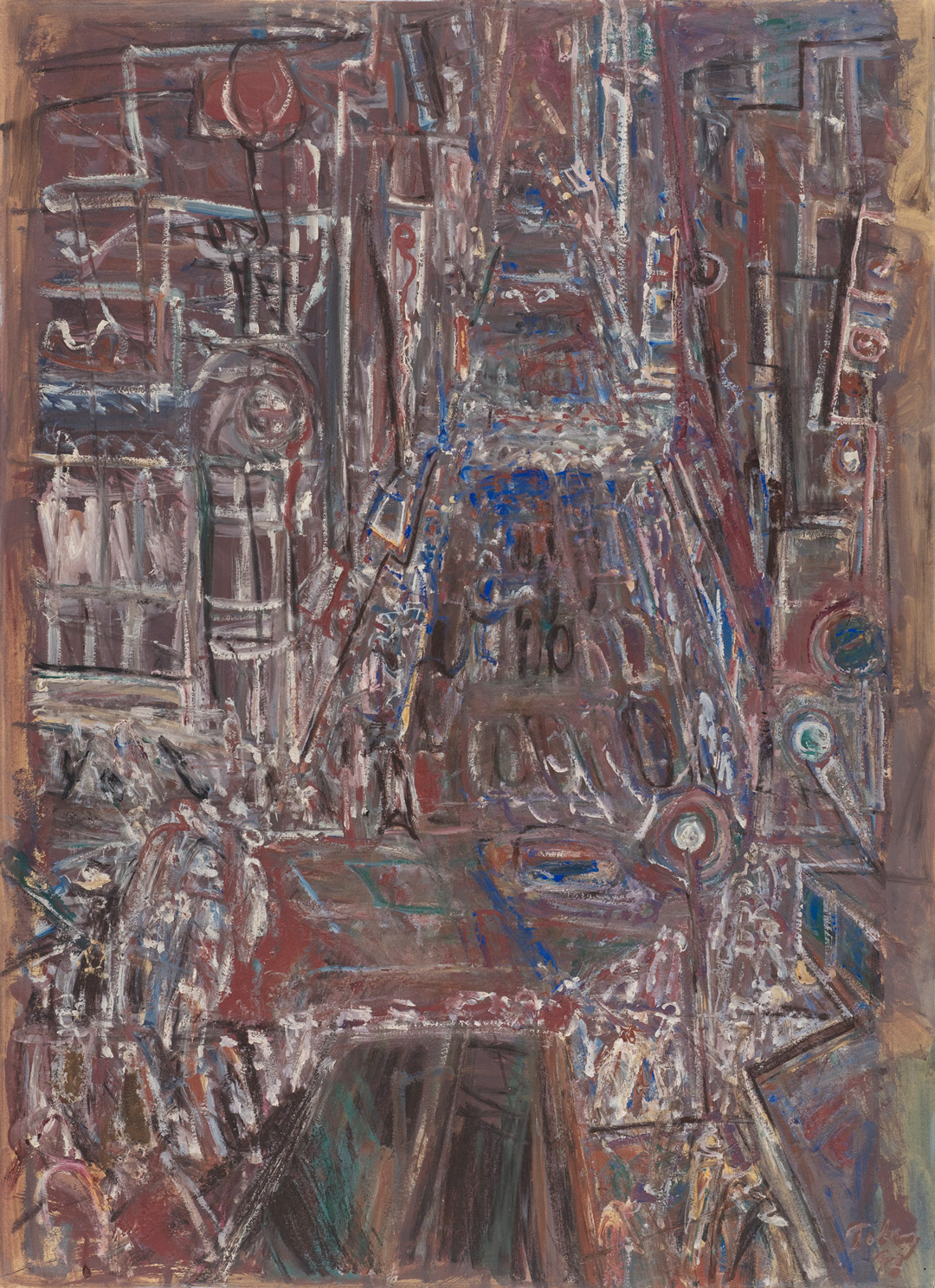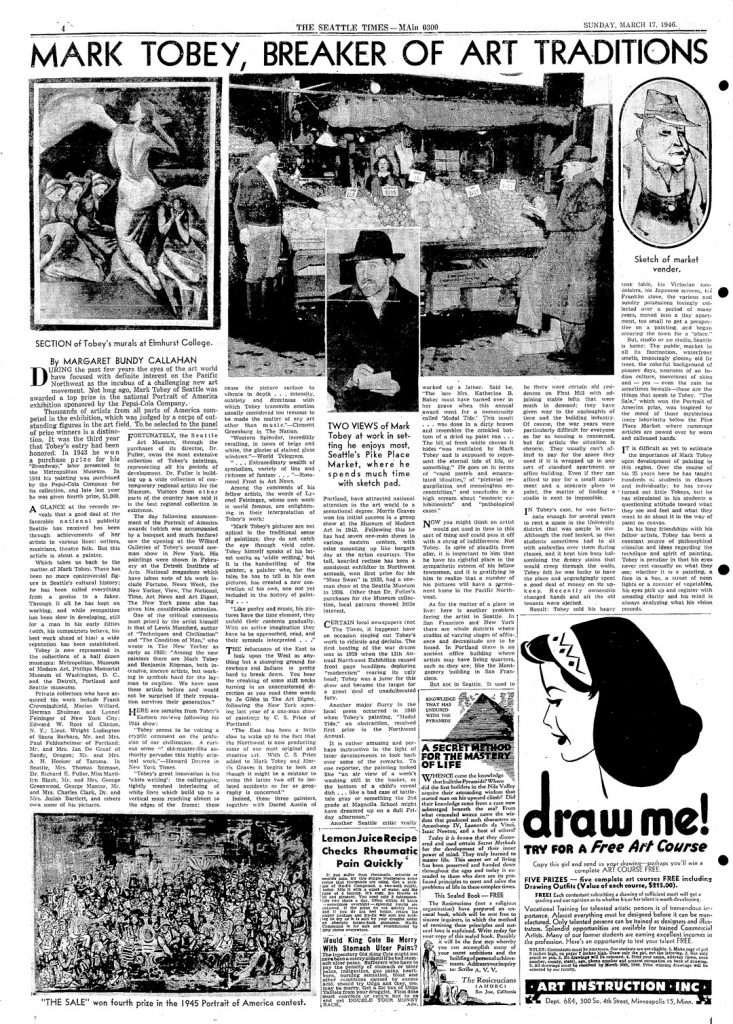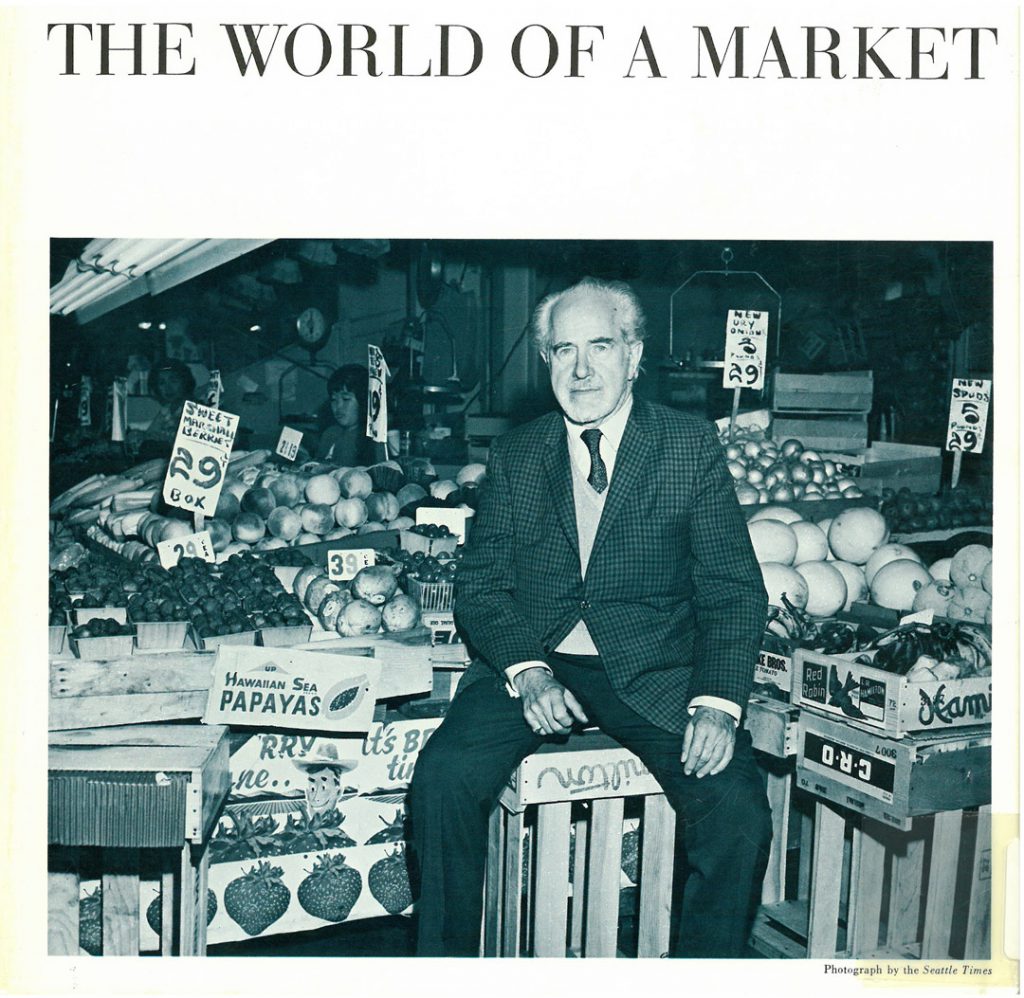Object of the Week: Pike Street, Seattle

“The Market will always be within me. Established back in 1907 by the farmers themselves—not for the tourist trade, but as a protest against the high prices paid to commission men—it has been for me a refuge, an oasis, a most human growth, the heart and soul of Seattle. . . .
For me every day in the Market was a fiesta. But, alas, wars came: the old men I had learned to know died; more and more stalls were empty; the Japanese were sent away. Mrs. Morgan, who ran a flower stand, said, ‘Mr. Tobey, the Market ist deadt’ The years dissolve, and I return to visit the Market. A few old friends remain—the brothers of the fish stall, but the interesting sign above their heads has been stolen. The chairs that ascended the incline directly below them, upon which tired shoppers used to rest, have been torn out. But the main part of the Market is still active, still varied, exciting, and terribly important in the welter of overindustrialization. There is the same magic as night approaches: the sounds fade; there is an extra rustle everywhere; prices drop; the garbage pickers come bending and sorting; the cars leave the street which reflects the dying sun. The windows are all that remain of light as the sun sets over the Olympics. A few isolated figures appear and disappear, and then the Market is quiet, awaiting another day.”1

The Seattle Times published this bio sketch on Tobey on March 17, 1946. Author Margaret Callahan links Tobey’s penchant for working in the public market to the difficulty he faced in finding an affordable private studio.

The Seattle Art Museum hosted an exhibition on Mark Tobey and the Public Market in August, 1963, leading to the publication of a book on the same topic: Mark Tobey: The World of a Market (1964). The back cover features this image of Tobey, at home among the papayas.
—Jeffrey Carlson, SAM Collections Coordinator